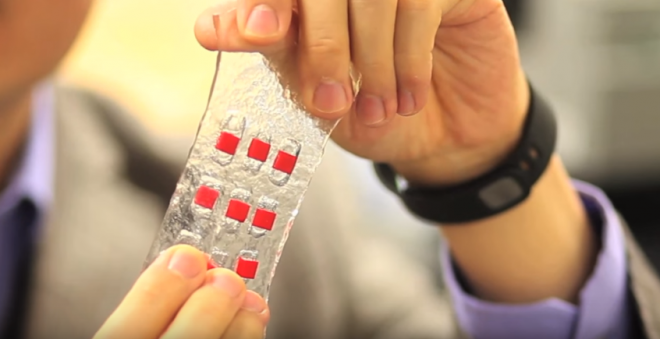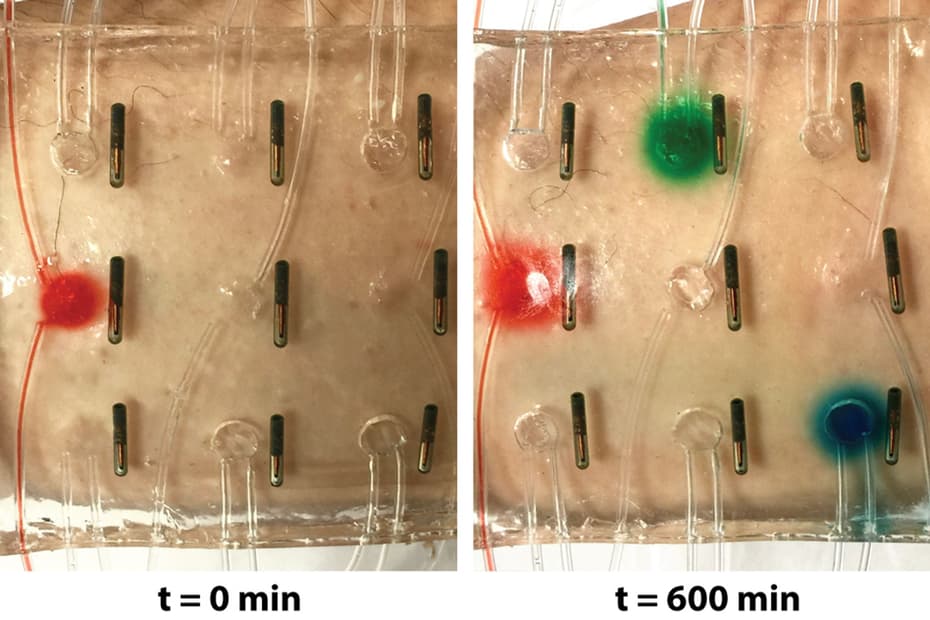
Researchers at Massachusetts Institute of Technology are calling the invention the ”Band-Aid of the future” – an electronic bandage that uses hydrogel to stretch over wounds and heal them faster.
The sticky, stretchy, gel-like material can fit in temperature sensors, LED lights, and other electronics. It can also fit into tiny drug-delivering reservoirs and channels to create a complete “smart wound dressing,” administering medicine to a wound in response to skin temperatures. If the bandage is running low on medicine, it can light up and notify the patient. The smart wound dressing could also work wirelessly, interfacing with devices like a Smartphone, providing additional information to the patient or medical staff.
Xuanhe Zhao, the Robert N. Noyce Career Development Associate Professor for MIT’s Mechanical Engineering Department says it’s all possible thanks to a unique hydrogel matrix. The matrix is a rubbery material mostly made up of water, designed to stretch and bond strongly to surfaces such as gold, titanium, aluminum, silicon, glass, and ceramic. Because it’s 90% water, it’s also compatible with skin.
“Electronics are usually hard and dry, but the human body is soft and wet. These two systems have drastically different properties. If you want to put electronics in close contact with the human body for applications such as health care monitoring and drug delivery, it is highly desirable to make the electronic devices soft and stretchable to fit the environment of the human body. That’s the motivation for stretchable hydrogel electronics.”
MIT Researchers Develop a Bandage With a Brain #bandage https://t.co/4V3G9ZWFGa
— Inventions AGENT (@inventions_agen) March 20, 2016
Zhao’s team has published a paper in Advanced Materials detailing how they embedded electronics (conductive wires, semiconductor chips, LED lights and temperature sensors) into the more workable hydrogel, which could be used on skin, as well as potential implants inside the body.
Co-author Hyunwoo Yuk explains:
“It’s a very versatile matrix. The unique capability here is, when a sensor senses something different, like an abnormal increase in temperature, the device can on demand release drugs to that specific location and select a specific drug from one of the reservoirs, which can diffuse in the hydrogel matrix for sustained release over time.”
While Yuk says an immediate application of the technology may be as a stretchable, on-demand treatment for burns or other skin conditions, Zhao is interested in using the hydrogel as a carrier for glucose sensors inside the body, as well as for neural probes in the brain. He says the hydrogel-sensor system his team is developing, would likely be robust and effective over long periods.
“The brain is a bowl of Jell-O. Currently, researchers are trying different soft materials to achieve long-term biocompatibility of neural devices. With collaborators, we are proposing to use robust hydrogel as an ideal material for neural devices, because the hydrogel can be designed to possess similar mechanical and physiological properties as the brain.”
This article (MIT Develops Electronic Bandage that can be Monitored via Smartphone) is a free and open source. You have permission to republish this article under a Creative Commons license with attribution to the author and AnonHQ.com.





